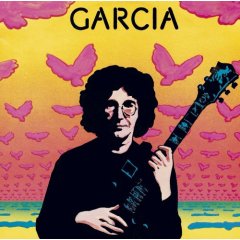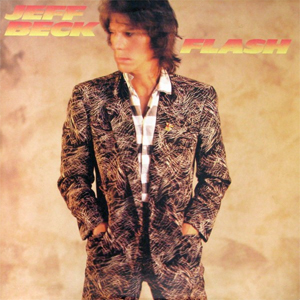Unlike that first Garcia album, which he recorded by himself with only Bill Kreutzmann, this installment features a pile of hired guns, as well as familiar names like Merl Saunders and John Kahn, who supposedly spearheaded the project and suggested several of the tunes. The album follows on from the recent Saunders collaboration, with Jerry playing mostly obscure covers from all over the place. For the most part, they’re fairly dull; “Let It Rock” barely sounds like a Chuck Berry song, and “Let’s Spend The Night Together” is just plain unconvincing. Van Morrison’s early “He Ain’t Give You None” doesn’t go anywhere, and the female backing singers don’t help. There’s something of a New Orleans vibe throughout, but we never had much use for Little Feat either.
From time to time his guitar leaps out of the mix, and it’s welcome. One true highlight is Irving Berlin’s “Russian Lullaby”, which evokes Django Reinhardt, complete with gypsy violin. “Turn On The Bright Lights” is another slow burner with plenty of lead work, but probably could have been faded earlier. We have to admit his Dr. John impression on “What Goes Around” is uncanny. “Mississippi Moon” comes from bluegrass buddy Peter Rowan, about whom more will be heard, while “Midnight Town” is a collaboration between John Kahn and Robert Hunter, and a wonderful ending.
This album grew on us to the point where we increased the initial rating; basically the less familiar you are with the original versions of these songs, the better. (The later expanded version of the album adds another nine covers from the Compliments sessions, some of which would feature in future Garcia bands and shows. There’s also a brief jam called “Cardiac Arrest” that’s livelier than anything else on the album, old or new.)
Jerry Garcia Compliments Of Garcia (1974)—3
2004 expanded CD: same as 1974, plus 10 extra tracks

:format(jpeg):mode_rgb():quality(90)/discogs-images/R-5419292-1417106665-1955.jpeg.jpg)




.jpg)

:format(jpeg):mode_rgb():quality(90)/discogs-images/R-2658055-1295305144.jpeg.jpg)